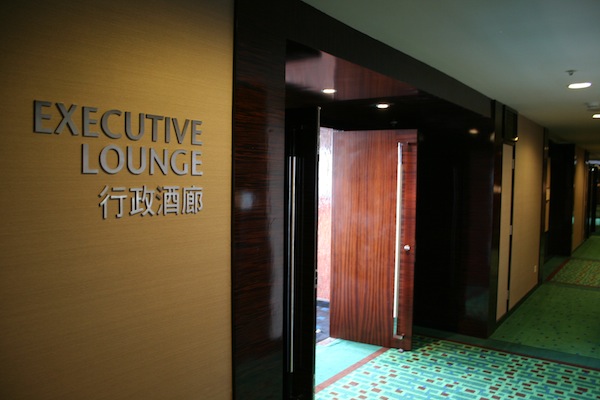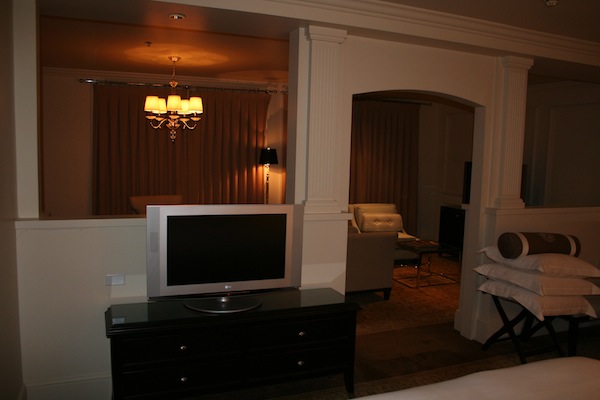Update: See our recent post, Is Mid-Tier Hotel Elite Status Worth It?
Back in February I posted a comparison of the top tier hotel benefits of the five major hotel chains. While there are some programs that are clearly more rewarding than others, it’s at least a fairly straightforward comparison, given that most top tier elite qualification requirements are roughly comparable. That’s not really the case with mid tier hotel status requirements, where the qualification requirements range from 15 nights to 50 nights annually.
So let’s start by comparing the mid tier status levels of the five major programs:
Hilton HHonors
In order to earn Hilton Gold status you need to make 16 stays or spend 36 nights per year at Hilton properties, or alternatively earn 60,000 base points. You can also earn Gold status for free for one year by having the Hilton Surpass American Express card, and you can maintain it by spending $20,000 per calendar year on the card.
Assuming you want to earn points for your stays (as opposed to miles), you earn 10 base points per dollar spent plus five bonus points for choosing points, plus a 25% bonus for being a Gold member.
As far as the on-property benefits go, you get free internet access for the duration of your stay, and also get an upgrade to a club room with access to the club lounge on a space available basis. Alternatively, if a club room is not available, you get complimentary continental breakfast in the hotel restaurant.

Beyond that, you typically get a room upgrade to a room with a better view, on a higher floor, etc. At Hilton’s other brands, like Embassy Suites and Hampton Inn, the benefits are marginal, since breakfast is included. Instead you get a points amenity (250 points at Hampton Inn hotels, 500 points at Embassy Suites hotels, etc.) or your choice of “snacks.” Typically it’s a pretty awful selection, consisting of either two soft drinks OR two candy bars.
Other than Marriott, which has substantially higher qualification requirements for their middle tier status level, Hilton is the only program that upgrades their mid tier elites to the club level on a space available basis. So between free internet and free club lounge access or breakfast, Hilton’s middle tier is actually quite good, maybe even so good that going for top tier status with them just isn’t worth it.
Hyatt Gold Passport
In order to earn Hyatt Platinum status you need to make five stays or spend 15 nights per year at Hyatt properties. You can also get Platinum status as long as you have the Hyatt Chase Visa card.
As a Platinum member you earn five base points per dollar spent, plus a 15% bonus for being a Platinum member, for a total of 5.75 points per dollar spent.
Given the incredibly low qualification requirements of only five stays per year, the benefits are actually pretty good. For one, you get complimentary internet, which alone is incredibly valuable. Furthermore, you receive a room upgrade to the best room within the category you booked.
The added perk is the Platinum Extra Awards you get for being a Platinum member, which you earn after every three stays, and get progressively better the more stays you make. For example, after your third stay you earn a certificate for 1,000 bonus Gold Passport points or welcome amenity, while after your fifteenth stay you can earn 2,000 Gold Passport points or a Regency Club upgrade, among other things.
While the benefits aren’t amazing, the qualification requirements are among the lowest. One of the most valuable benefits at luxury hotels as a leisure traveler nowadays is complimentary internet, and getting that after only five stays is great, in my opinion.
Marriott Rewards
It’s really not all that fair to compare Marriott’s mid tier status level to anything but other programs’ top tier status level, given that 50 nights per calendar year are required to achieve Gold, their mid tier level. There’s no way to earn status based on stays, sadly. That being said, for every $3,000 you spend on the Marriott Rewards Visa, you get one night elite qualification. In other words, to earn mid tier just from credit card spend, you would need to spend $150,000 per year on the card.
As a Gold member you earn five to 10 base points per dollar spent (depending on the property you’re staying at), plus a 25% bonus for being a Gold member, for a total of 6.25 to 12.5 points per dollar spent.
Marriott offers free internet for Gold members worldwide. As a Gold member you get an upgrade to the best available non-suite room, much like the top tier perks of most other programs. Furthermore, you are guaranteed access to the club lounge if it is open at the hotel (with the exception of Ritz Carlton properties, as they have their own rewards program). If the club lounge is closed or the hotel doesn’t have a club lounge, you get complimentary continental breakfast.
Marriott doesn’t do a whole lot to differentiate between their mid tier (Gold) and top tier (Platinum), at least on paper. The only valuable added benefit of being a Platinum is that you’re guaranteed an arrival gift, though even that isn’t worth a whole lot. So while Marriott has the most rewarding mid tier status level, a lot more nights are also required than with any other program.
Priority Club/InterContinental
Priority club and InterContinental probably have the most complicated elite tier structure. While InterContinental hotels are part of Priority Club, they have a separate elite recognition program.
Let’s start with the Priority Club program. The mid tier status level, Gold, requires 15 nights or 20,000 points annually. The 20,000 points might sound like a lot, though points add up quickly with Priority Club, since they include all points earned in that total (and not just base points). In other words, if you sign up for the Priority Club Visa with a 60,000 point sign-up bonus, you not only get instant Gold status, but are promoted all the way to Platinum, their top tier.
Gold members earn 10 base points per dollar spent at all non-InterContinental Priority Club properties, and an additional 10% Gold bonus. Sadly, the benefits of Gold status other than that are quite literally non-existent. While you might occasionally get a room upgrade, don’t count on it.
The more interesting aspect of this is status with InterContinental. They have a separate status program that can be bought into, called the Ambassador program. Annual membership costs $200 or 32,000 points, with a charge of $100 or 20,000 points for annual renewal. For being an Ambassador member you get a buy one get one free weekend night certificate that is valid for a year, along with 5,000 Priority Club points.
The actual in-hotel benefits are decent as well. As an Ambassador member you get a guaranteed one category upgrade (which usually means a room with a better view), guaranteed 4PM check-out, a complimentary in-room movie, and a welcome gift.
While Gold is not worth a whole lot, Ambassador is a bargain that’s tough to beat, and will almost certainly pay for itself as soon as you make your first weekend stay.
Starwood Preferred Guest (SPG)
In order to earn Starwood Gold status you need to make 10 stays or spend 25 nights per year at Starwood properties. If you have the Starwood American Express credit card you automatically get five free nights and two free stays towards elite qualification annually.
You can also earn Starwood Gold status by spending $30,000 annually on the Starwood American Express credit card, or just by having the American Express Platinum card.
As far as on-property benefits go, you get 4PM late check-out and a room upgrade upon availability, though oftentimes that doesn’t materialize. While you will often get an upgrade to an executive room or room with a view, many hotels will claim to be sold out and to not have any upgradable rooms available. You also earn three points per dollar spent, unlike the normal earning rate of two points per dollar spent.
So as you can see, it’s very tough to compare mid tier hotel status benefits because of how different the qualification tiers are. Just in terms of the benefits and not taking into account the qualification requirements, I would say Marriott is the best, followed by Hilton, followed by Hyatt, then Starwood, then Priority Club. However, I think Hilton and Hyatt offer exceptionally good values given the requirements for their mid tier status qualification
|
Program |
Mid-Tier Eligibility |
Mid-Tier Benefits |
Cons |
|
Hilton HHonors |
16 stays / 36 nights or $20K Hilton AMEX spend (Gold) |
-17.5 pts/$1 spend |
Fairly high qualification requirements |
|
Hyatt Gold Passport |
5 stays / 15 nights or for Hyatt Chase Visa (Platinum) |
-5.75 pts/$1 spend |
Limited number of properties worldwide |
|
Marriott Rewards |
50 nights (Gold) |
-6.25-12.5 pts/$1 spend |
High threshold to qualify for elite status |
|
Priority Club (Intercontinental) |
15 nights/20,000 points (Gold) Pay $200 or 32,000 points (Ambassador) |
-11 points/$1 spend -3000 points/stay at Intercontinental |
Gold benefits virtually non-existent |
|
Starwood Preferred Guest |
10 stays/25 nights or $30K SPG AMEX spend (Gold) |
-3 points/$1 spend |
Few benefits aside from late check-out and bonus points |
Need Award Booking Help? Our fee is as low as $75 per ticket if you book your hotel through us.
If you enjoyed this, join 90,000+ readers: please follow TravelSort on Twitter or like us on Facebook to be alerted to new posts.
Become a TravelSort Client and Book Your Hotel with Virtuoso or Four Seasons Preferred VIP Amenities!



